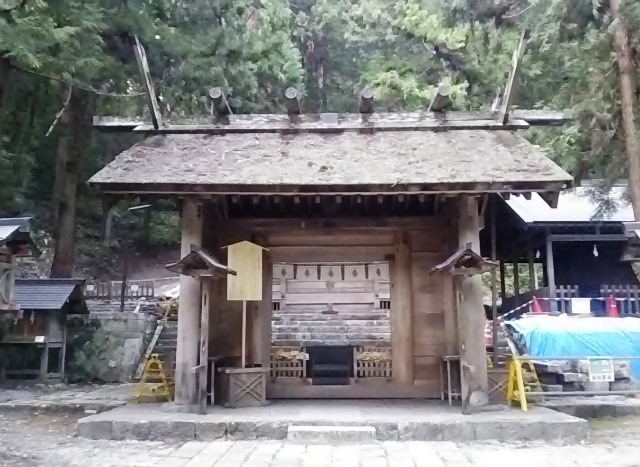Nishina Mikuriya
Mikuriya is the estate or plantation of Ise-jingu shrine, which produces kitchen materials or makes offerings to the shrine. Ise-jingu is the gardian deity of imperial family, and Nishina-shinmeigu seems a kind of branch shrine. Although the old refferences about Mikuriya are a few, Jinguzatsureishu, one of the oldest description, has reported its built-up era as 1048, while another one estimates the built-up at around the emperor Goreisen- era (1045-1068)by Dr. Shigeki Isshi. It is likely that Nishina Mikuriya was set up not later than 1068 . According to Jinposho, another old refference (1193), it was noted that Nishina Mikuriya had 40 ha farm land and made an offering of hemp cloth ( almost 10 layers ) as old as before 1190s. The 40 ha farm land seems corresponding present three comunities: Miyamoto, Sonebara and Uruuda districts in old Yashiro-village. Probably Nishina Mikuriya was the oldest in Shinano province, Nagano Prefecture now.
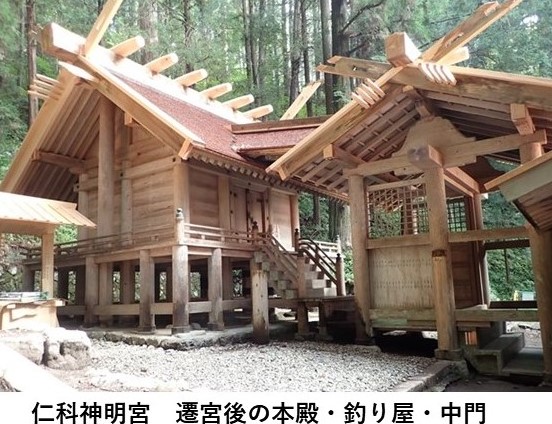 Let me tell some interesting story. Can you find some unique structure on the Shinmei building? We can see some similarity between Shinmei-built and the High-floored house of Shin family in southern China. Two of the special feature called "Chigi" and "Katsuogi" are in common between the two. "Chigi" is the crossed poles at the corner of Shinmei-roof. Nishina-Shinmeigu equipped six "Katsuogi" on the roof. The even number is used only for Ise-Naigu-shrine and its lineage. "Katsuogi" is not clear on the roof of High-floored house, but there are some similar equipments on it.
Let me tell some interesting story. Can you find some unique structure on the Shinmei building? We can see some similarity between Shinmei-built and the High-floored house of Shin family in southern China. Two of the special feature called "Chigi" and "Katsuogi" are in common between the two. "Chigi" is the crossed poles at the corner of Shinmei-roof. Nishina-Shinmeigu equipped six "Katsuogi" on the roof. The even number is used only for Ise-Naigu-shrine and its lineage. "Katsuogi" is not clear on the roof of High-floored house, but there are some similar equipments on it.
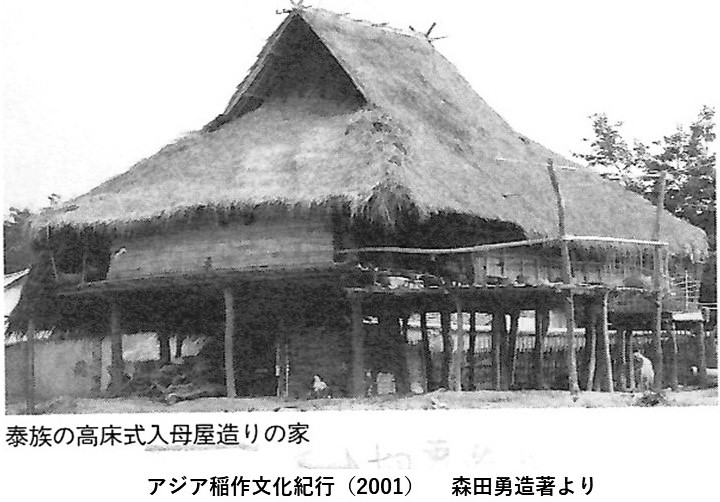 "Katsuogi" of Shinmei-built is rather decorative, while the one on the High-floored house seems still keeping the original function; by preventing the house from the rain-leak. "Chigi" also had a function to strengthen the corner of roof sides. The design of Shinmei-built might be related to the High-floored architecture in an old time.
"Katsuogi" of Shinmei-built is rather decorative, while the one on the High-floored house seems still keeping the original function; by preventing the house from the rain-leak. "Chigi" also had a function to strengthen the corner of roof sides. The design of Shinmei-built might be related to the High-floored architecture in an old time.
We can point out another similarity between Shinmeigu ceremony and the rite of Miao tribe in China. People said that Miao people are the descendant of Vietnamese and had immigrated from Jiangnan province to Guizhou province long time ago. They are also known as a rice growing people. Their faith in God is also very similar to Japanese faith; they believe Ancient spirit and that many Gods exist for everything.
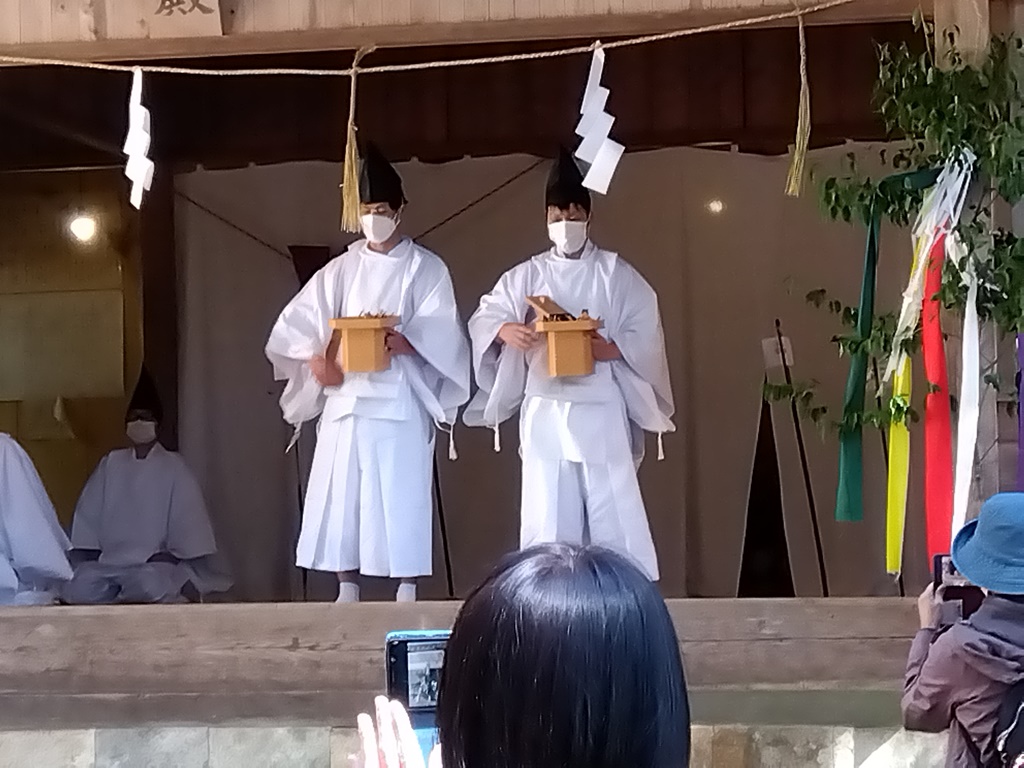
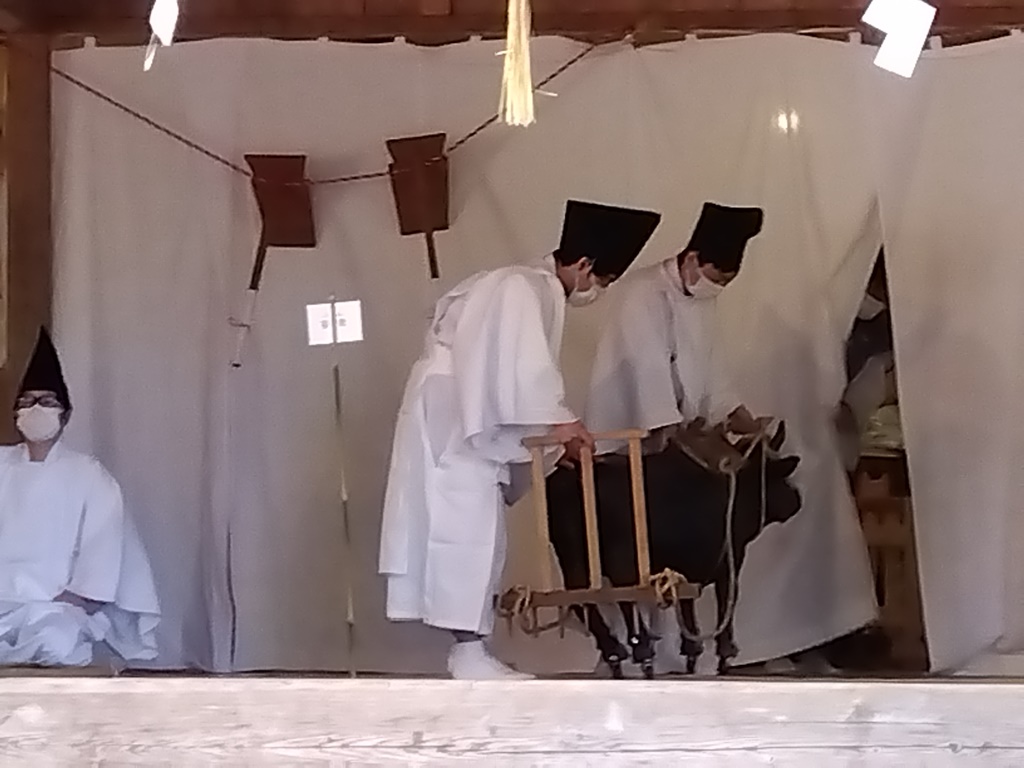 Miao people pray the success of rice yield by unique way of mixed-planting rice and "Kaya" (Imperata cylindrica) at the first cropping. We use "Kaya" also in Nishina-Shinmeigu ceremony called as " Koshiki sakuhajime". In this ceremony, young guys show us the dance which demonstrates the paddy field work. At the end of the ceremony, they distribute a hoe-miniature, small talisman and one straw of "Kaya". Farmers bring back "Kaya" and put it at the corner of the field. It is believed that "Kaya" protects rice from various disasters. If these unexpected coincidences are not miracle but an inevitability, Japanese rice and related culture might closely connected to South China, particularly to the Miao tribe.
Miao people pray the success of rice yield by unique way of mixed-planting rice and "Kaya" (Imperata cylindrica) at the first cropping. We use "Kaya" also in Nishina-Shinmeigu ceremony called as " Koshiki sakuhajime". In this ceremony, young guys show us the dance which demonstrates the paddy field work. At the end of the ceremony, they distribute a hoe-miniature, small talisman and one straw of "Kaya". Farmers bring back "Kaya" and put it at the corner of the field. It is believed that "Kaya" protects rice from various disasters. If these unexpected coincidences are not miracle but an inevitability, Japanese rice and related culture might closely connected to South China, particularly to the Miao tribe.
Nishina family, a powerful local, has governed and served to Nishina shrine from the beginning to Tensho 10th (1582). In the Sengoku-War era , the governer Nishina was replaced by Ogasawara family and Ogasawara served to Nishina Shinmeigu shrine. From this era to Meiji era, the marnor expanded to 66 local villages in Azumi district, and Nishina Shinmeigu centered in many branch shrines.
Nishina-shinmeigu, its main sanctuary, Naka-mon and Tsuriya structures are the oldest of Shinmei-build style architecture in Japan, and is designated National treasure. This highly reserved Shinto-shrine was built in the late 12th century, late Heian era.
Note that: the meaning of Miyamoto is the area that situates near the shrine, and Yshiro means directly the "shrine".
Like Ise-jingu, the residence renewal, we call it as Sengu, is done every 20 years, and 2019 was the timing of Sengu. But, unlike Ise-jingu, a partial renewal is the tradition of Nishina-shinmeigu, because of a small budget. In turn, however, the partial renewal caused the National treasure as an oldest woody archtechture for more than 300 years.
We still keep remaining many Munafuda, which are the records of each renewal. Since 1376, a series of 33 Mudafudas show 620 years history. Of 33 Munafudas, 27 are the special records and prove that the latest whole-renewal was at Kanei 13 (1636), thereafter only partial repair has been conducted every 20 years. Now no other architects like this style is found in Japan hence in the world.
(Refference_all Japanese sorry)
・Naganoken-Rekishikan/Shinano-shiryo vol.3 p35.
・https://trc-adeac.trc.co.jp/Html/ImageView/2000710100/2000710100100010/0305/?pagecode=35
・Asia-Inasaku-Bunka-kiko, auther;Morita Yuzou,pub;Yuzankaku-shuppan 2001,pp82-83,115-116.
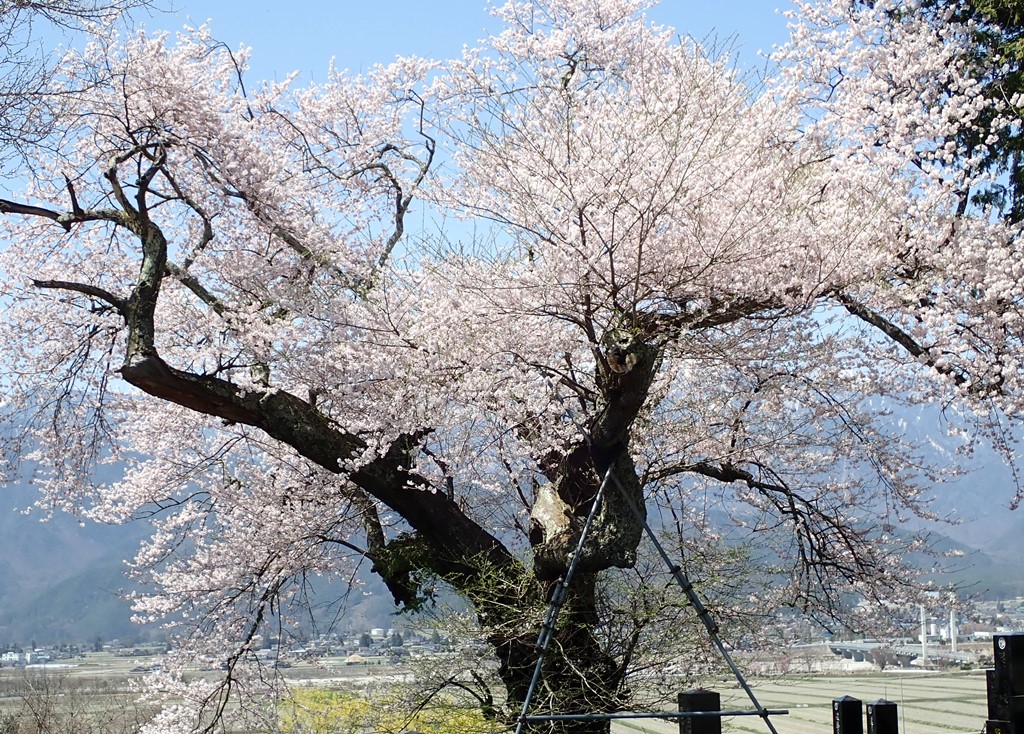 End-farm situates in this Mikuriya and has been doing agriculture since at least Edo-era. We have an old cherry tree on our grave yard, which is estimated as 400 years old. One of the oldest ancestral tablet tells us the memorial date going back 1622. Presumably our ancestral parents cultured the same land for hundreds times.
End-farm situates in this Mikuriya and has been doing agriculture since at least Edo-era. We have an old cherry tree on our grave yard, which is estimated as 400 years old. One of the oldest ancestral tablet tells us the memorial date going back 1622. Presumably our ancestral parents cultured the same land for hundreds times.
